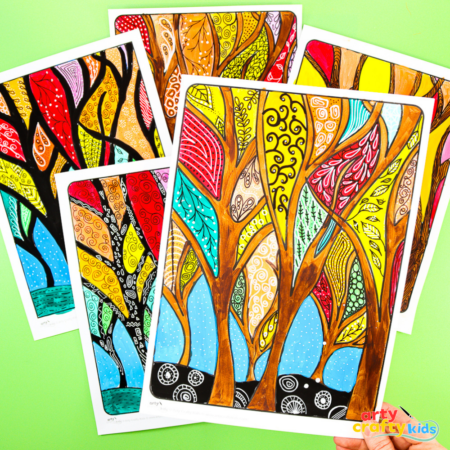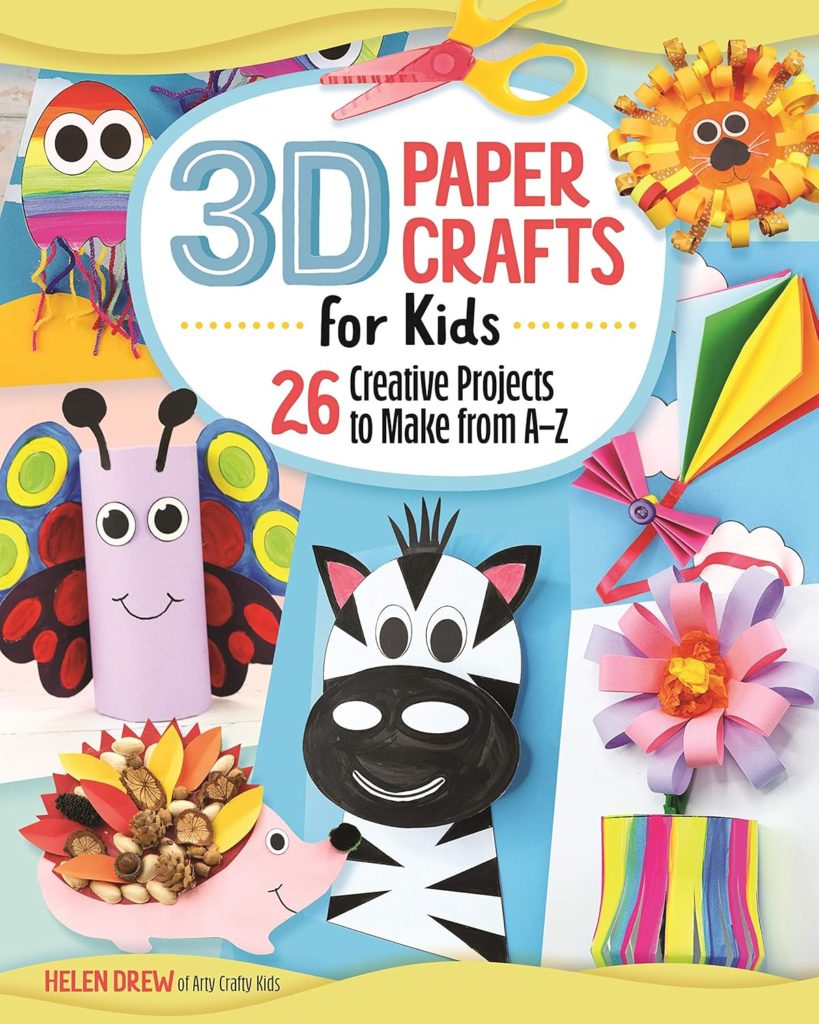Sharing is caring!
Fall is the season of color, creativity, and imagination — and this Fall Tree Painting Project is a wonderful way for kids to explore them all. Using bold autumn colors and a mix of doodles and patterns, children can design their own vibrant fall trees that are as unique as they are.
This project completes our Fall Pattern Doodle Art Set, which also includes the popular Fall Leaf Painting for Kids and Pattern Pumpkins tutorials. Together, these activities give kids the chance to experiment with line, shape, and design while building confidence in their creative expression.
To make doodling even easier, the project includes our Doodle Booklet with 72 pattern ideas for inspiration. From swirls and zigzags to intricate shapes and playful designs, children can mix and match patterns to add eye-catching details to their autumn foliage.
Whether you’re a parent planning a fun weekend project, a teacher preparing a seasonal classroom art lesson, or a homeschooler looking to add creativity to your curriculum, this doodle and pattern fall tree art project is simple, engaging, and perfect for all ages.
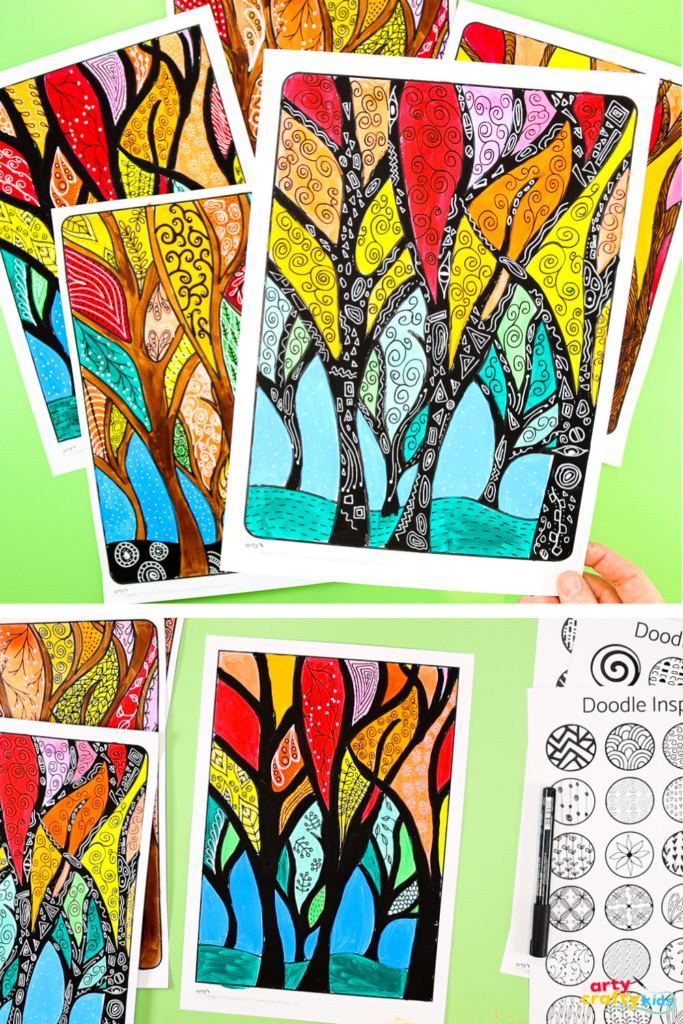
Step-by-Step: Fall Tree Painting for Kids – Doodle Pattern Art Project
Materials:
- White Card Stock
- Paint
- Acylic Paint
- Marker Pens
- Pencil
- Tree Templates and Doodle Inspiration & Practice Sheets (members will need to login to access the templates).
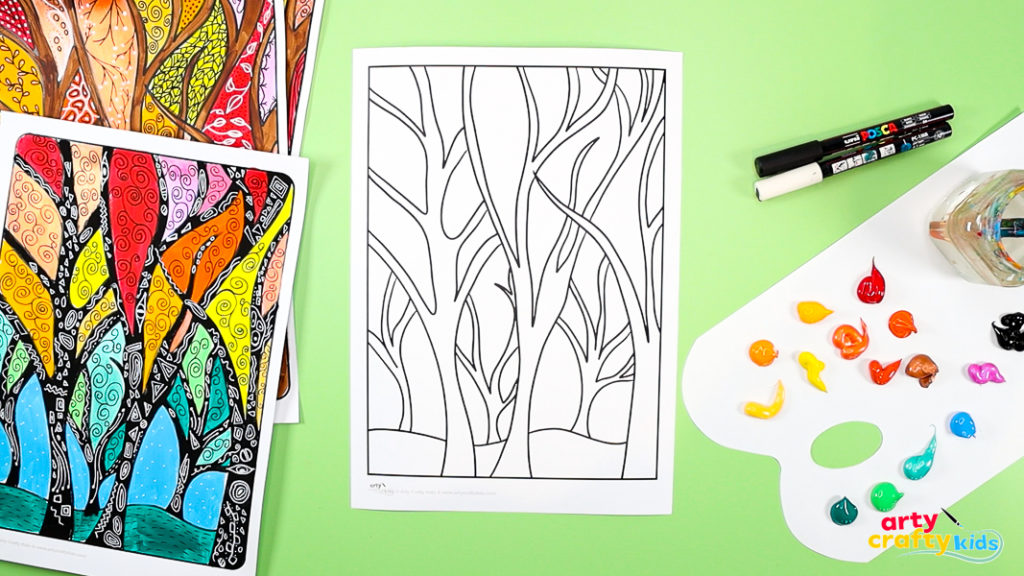
Not a Member?
Join the Arty Crafty Kids club to access the Fall Tree Template and Doodle Inspiration Booklet and 100s more Art and Craft templates, How to Draw Guides, and Coloring Pages.

How to Paint a Fall Tree with Doodle Patterns
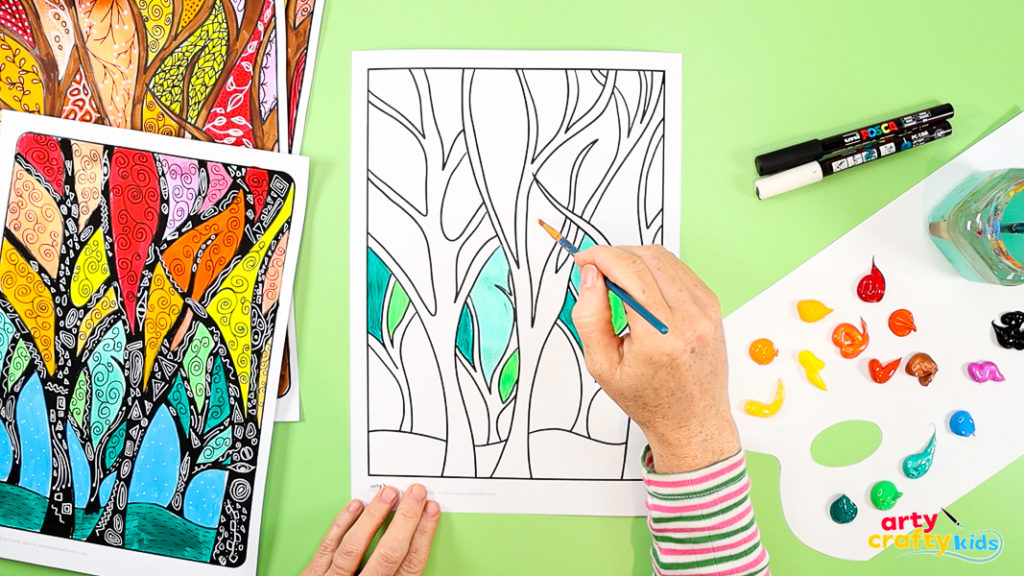
Step 1: Paint the ‘tree foliage’
Begin by filling in the tree foliage shapes with bright, bold fall colors.
Encourage Arty Crafty Kids to think about the changing season — golden yellows, fiery oranges, deep reds, and even the last hints of green all work beautifully.
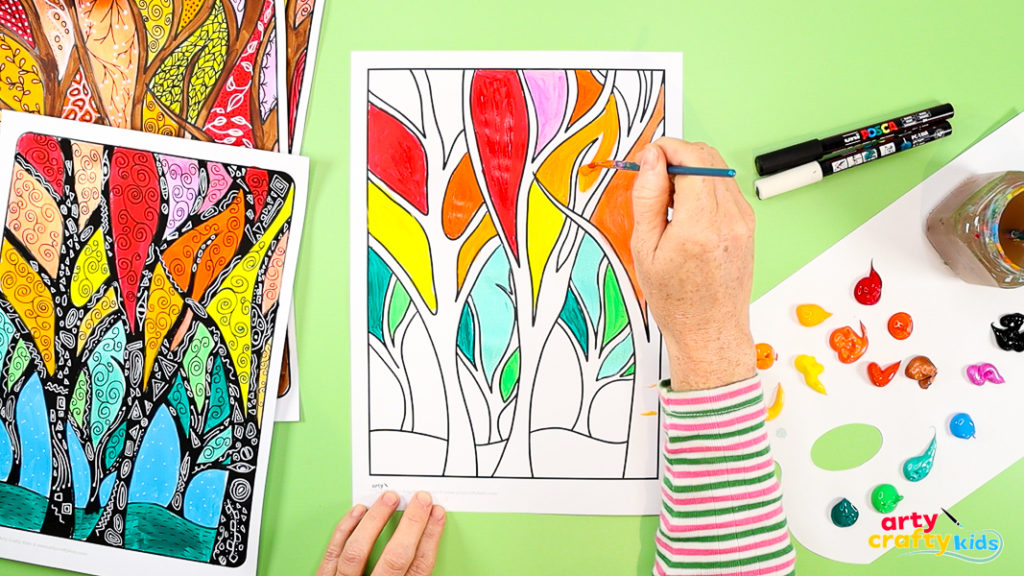
To make the painting extra eye-catching, try mixing warm tones with a few contrasting cool shades like turquoise or teal. This contrast will help the doodle patterns stand out later on.
At this stage, there’s no need to worry about neatness or staying perfectly inside the lines. The goal is to layer the tree with rich blocks of color that will become the backdrop for the doodles.
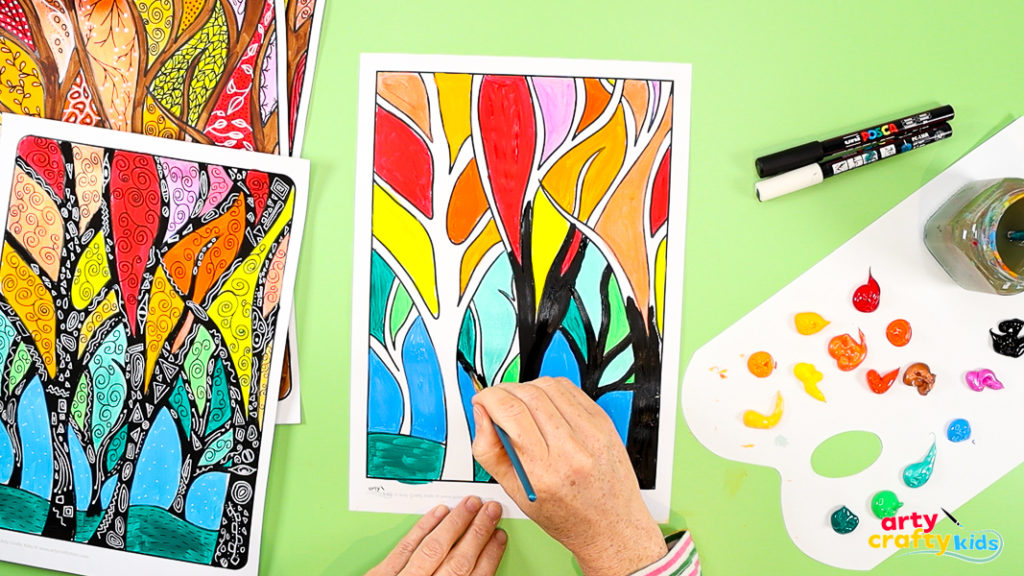
Step 2: Paint the fall trees
Next, paint the tree trunks and branches. Kids can choose to use black paint for a bold, graphic look or brown paintfor a more natural effect. Both options work beautifully and will help the colorful foliage really stand out.
A thinner brush can help with narrow branches, while a medium brush is great for filling larger areas quickly.
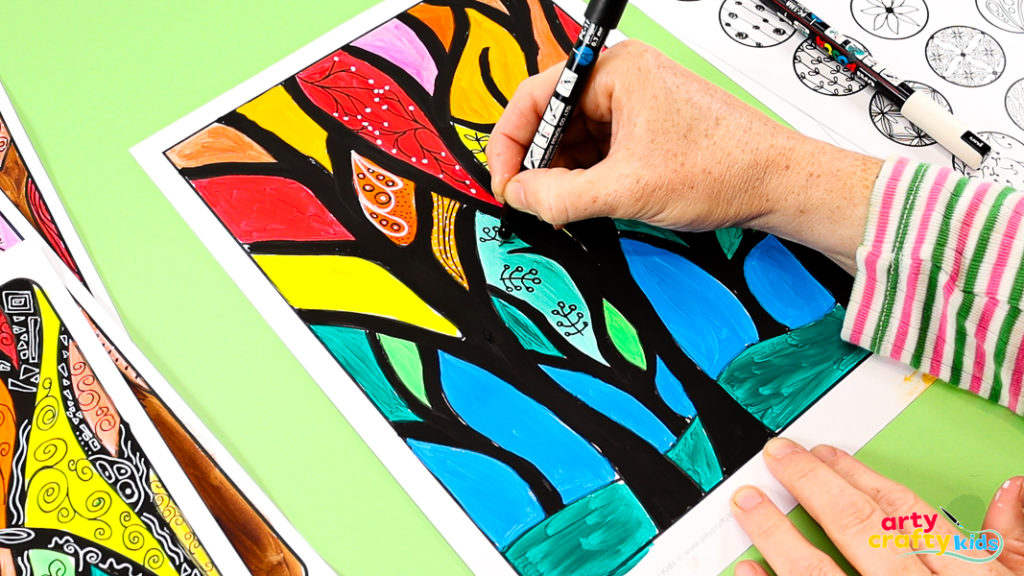
Step 3: Add doodle patterns
Once the paint has dried, it’s time to bring the tree to life with doodles and patterns. Using the Doodle Inspiration Booklet, kids can choose from 72 different designs — from swirls and spirals to zigzags, dots, and leafy motifs — or invent their own!
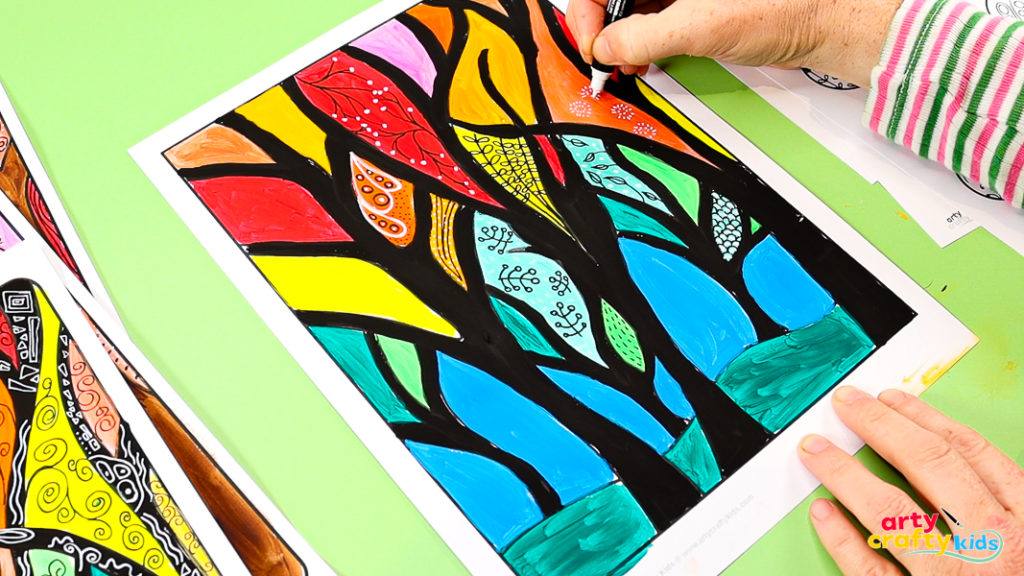
Encourage children to fill each foliage section with a different pattern. This creates contrast and makes the artwork vibrant and eye-catching.
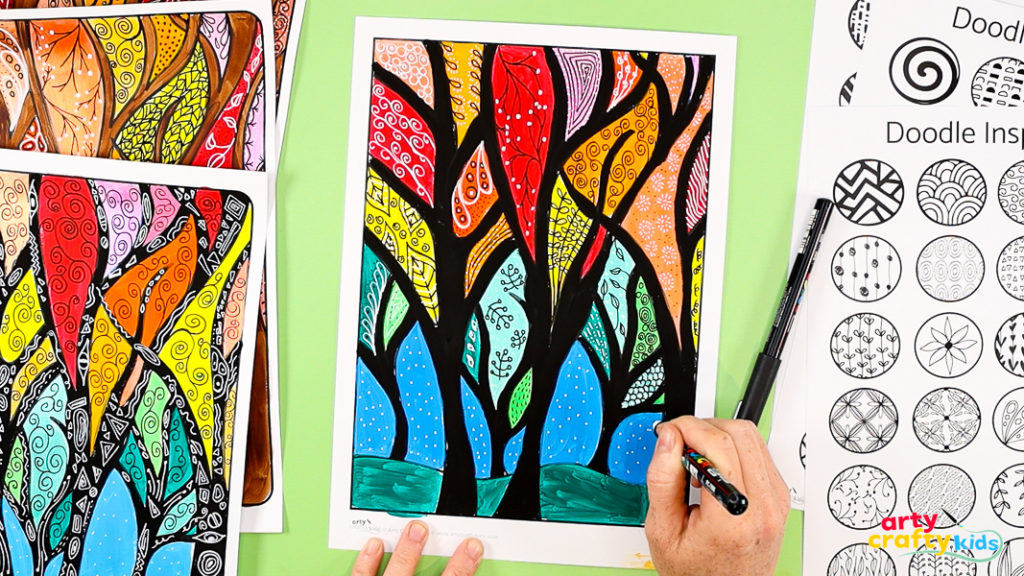
For best results, use marker pens such as acrylic paint markers, fine-tip black pens, or even glitter pens for extra sparkle. In this example, we’ve used black and white acrylic markers to make the doodles pop against the colorful background.
Fall Tree Painting Adapations
One of the best things about this Fall Tree Painting project is how adaptable it is. Children can explore the activity at their own level, and teachers or parents can easily adjust the project to suit different ages, abilities, or creative goals. Here are a few inspiring variations:
Gustav Klimt Inspired Tree
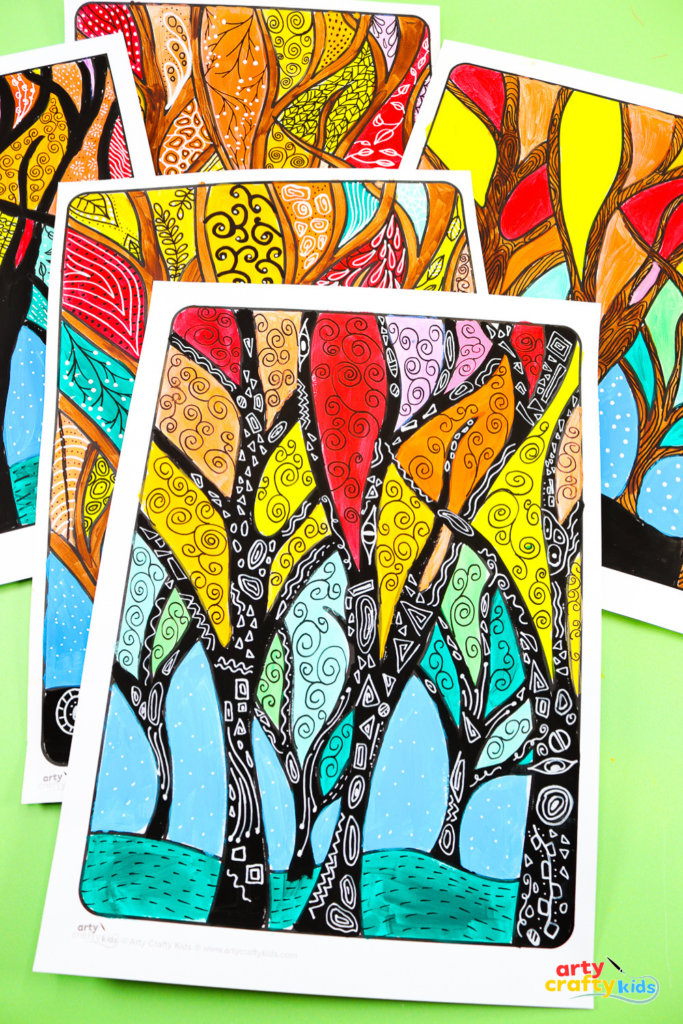
Our Klimt-inspired version takes its cue from the artist’s love of intricate shapes and decorative motifs.
In this project, the inspiration is seen in the doodle patterns — triangles, spirals, eyes, and circles — which echo the ornamental details often found in Gustav Klimt’s work.
To strengthen the connection, children could also paint their trees in a golden color, reflecting Klimt’s iconic use of gold tones in pieces like The Tree of Life.
This approach works particularly well for older children (ages 8+) who are ready to experiment with symbolism and explore how patterns can tell a story within a piece of art.
Black Fall Tree
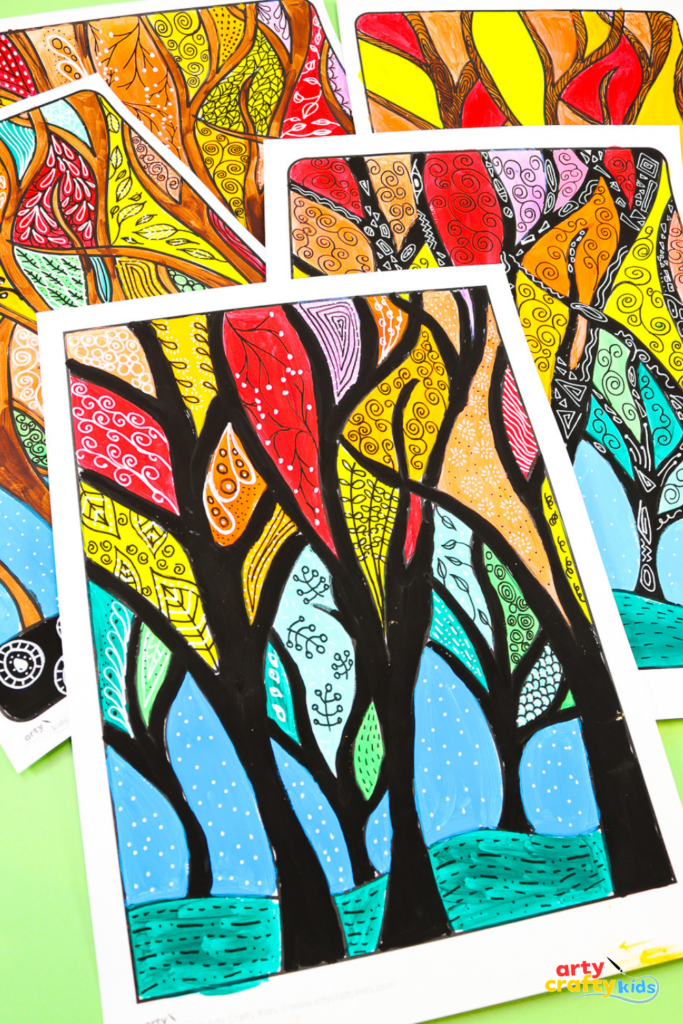
Painting the tree in bold black creates a dramatic, graphic look that makes the doodles and colors really pop.
This version is well-suited to children who enjoy strong contrasts and want their patterns to stand out clearly. It’s a fun option for ages 6+ and works beautifully in a classroom display.
Brown Fall Tree Art
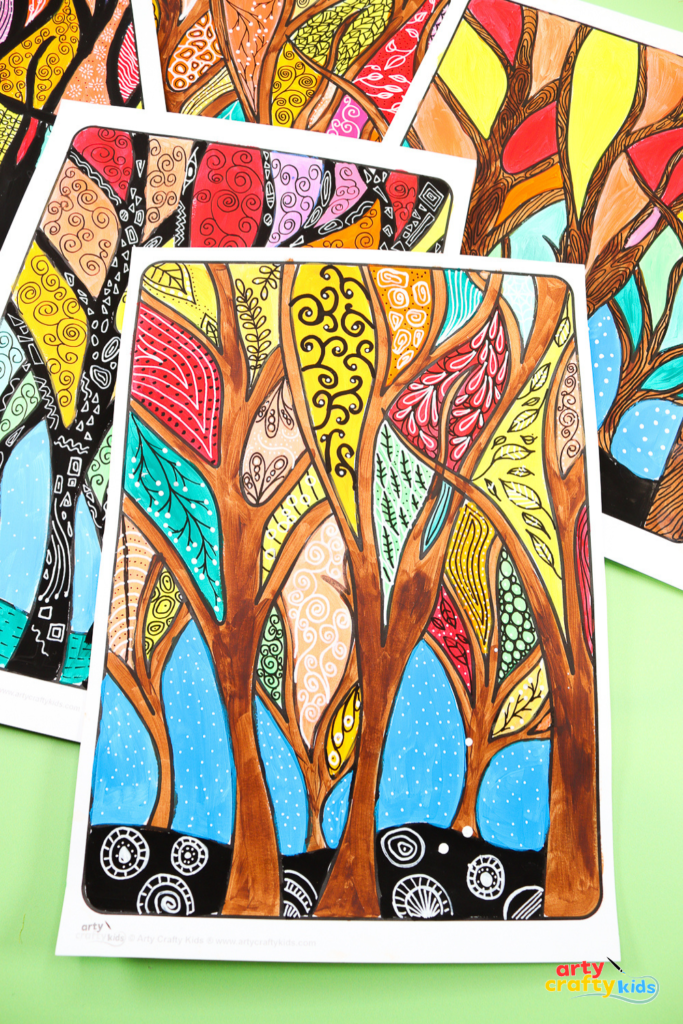
A brown tree creates a more natural look and can feel softer and less graphic than the black version.
This is a great choice for children who prefer a gentler aesthetic or who want their trees to resemble those they see outdoors.
Suitable for most ages, and especially appealing for younger children who are learning about seasonal changes in nature.
Autumn Tree with Doodles
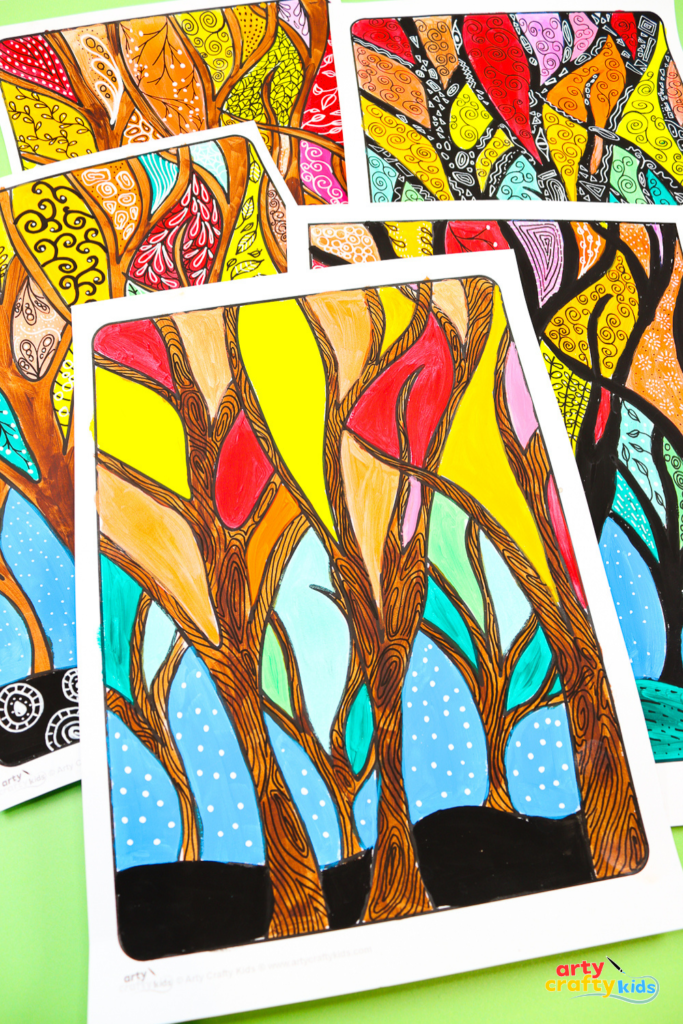
For younger children (ages 4–6), leaving the tree without doodles can be just as effective.
The focus shifts to painting with bold blocks of fall colors, helping children build confidence with a brush and explore color mixing.
This version is also a good introduction before moving on to more detailed doodle patterns as they grow.

